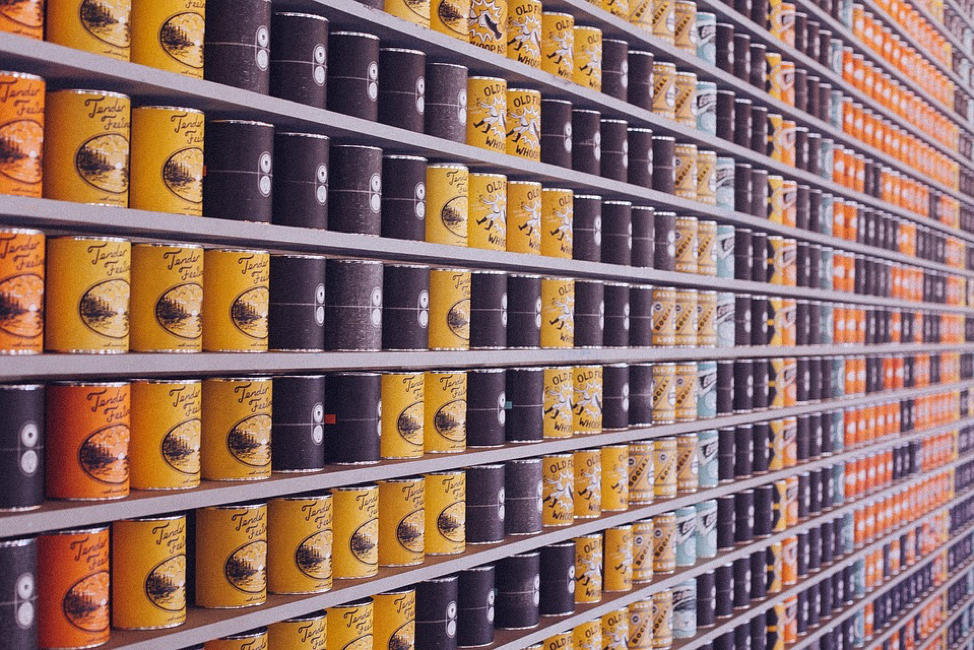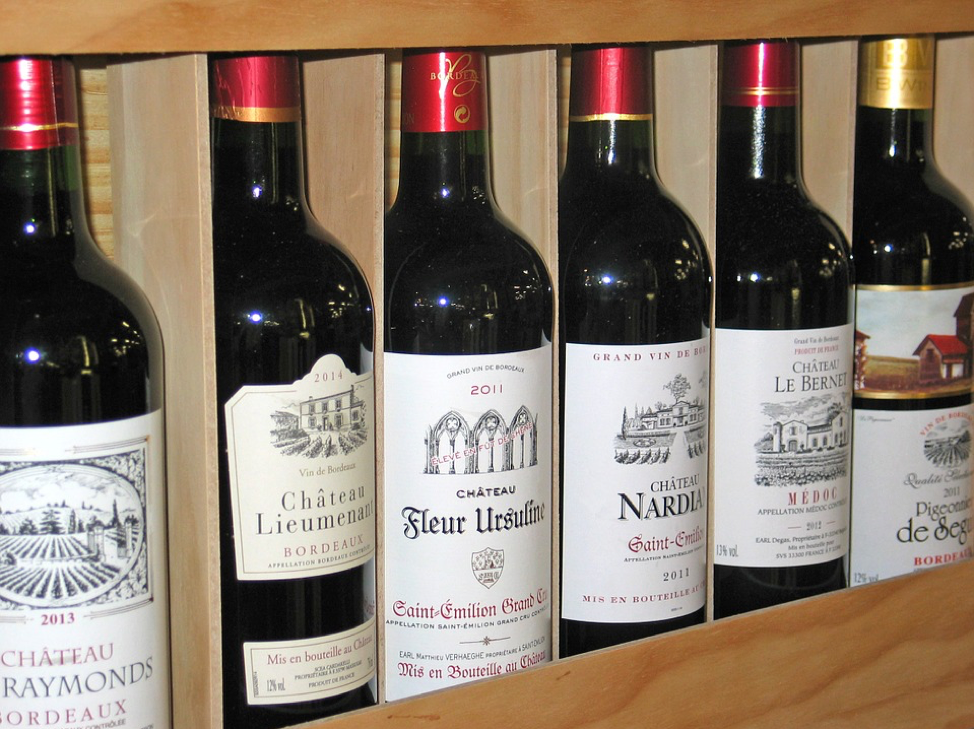All about labeling: start to finish
Geplaatst door Sticker Mule op
The right label can make the difference between the success or failure of a product. Making the perfect product label takes a combination of creativity, inquisitiveness and planning.
Labels have their place as personalized gifts, signage for bespoke products and – of course – to identify commercial products. It’s important, however, to think things through before starting your project so as to avoid mistakes. By understanding the process involved in creating stylish and engaging labels, you too can create designs that attract consumers, communicate with customers and provide them with important information.
What's it all about?
Labels are part of the packaging used to make goods look presentable and appealing. It’s the written information on a container or package. This might include vital elements such as brand colors, a company logo, distinct materials and a notable shape.
Labels are about more than marketing. Some label details fulfill legal requirements. Whether a product is a brand-new market entrant or a well-known staple, it must comply with legal regulations regarding labeling.
For nearly every product imaginable, there are varying degrees of mandates that dictate what information companies must provide for consumers. Food products, for example, are governed by the United States Food and Drug Administration (FDA), as are cosmetics.
Plan for success
Whether you’re creating a custom label for yourself or a client, you must develop a design that’s functional and takes into account all product variables. Therefore, the starting process for creating a label is one of information gathering, rather than creativity.
If you’re developing a label for someone else, you’ll need information from the client. In some instances, the client will already have a logo that you can use to start the process. In other cases, you have to start from scratch, which should factor into the final price of creating the label.
You must also consider where the client plans to sell the product. Using this information, you can develop ways to differentiate the offering.
If the client intends to sell their goods in a supermarket, for example, you must develop a label that will distinguish it from all the other similar products in the same section. If the client, however, will sell their good solely online, you’ll need to come up with a different strategy.
During this phase, it helps to think about who will use the product. You also need to gather this information from the client because while the product may provide some clue as to who will use it, only the proprietor knows exactly how they plan to promote their goods.
Assessing the big picture
Regarding the intended product, you’ll want to know specific details, such as what values the ideal consumer holds as well as their education level. Before starting your label design, it’s essential that you understand the “W’s”:
- Who
- What
- When
- Where
- Why
- How
Knowing that the product is for male teenagers, for instance, isn’t enough insight for you to create the best design. You must also ask yourself what other kinds of similar goods the ideal consumer purchases. This kind of detailed information is needed to design a label that speaks to the right audience.
After gathering basic information, you’ll need to conduct research. You must further investigate the intended audience by identifying their age, gender, income and other information that you may have overlooked during the initial round of research to ensure that you haven’t missed any important details. These seemingly innocuous facts will inform you throughout the design process.
You should also learn as much as you can about competing products. You don’t want to create a label that’s too close in appearance to a competitor’s. Moreover, this research will give you an idea of what kind of label design appeals to the audience for that product.
Getting the message across
Label design is about more than creating an attractive project. You must also provide information that’s important to consumers.
Of course, there are certain elements that will take up the most label real estate. This might include the name of the product and the company slogan as well as the company logo. For the rest of the information, however, you must figure out how to distribute it among the remaining space on the label.
One piece of supplementary information that’s important to display prominently is the universal selling proposition (USP). In fact, the USP should factor into all stages of the design process.
The purpose of the label is first to attract consumers and then engage them. The way to accomplish this in its entirety is to include the USP conspicuously on the label face.
If the client has not developed a universal selling proposition, you can work with them to figure out the benefits of the product and promote these concepts on the label. By knowing the USP or product benefits you can make appropriate design decisions during the planning stage of creating the label.
Now the fun part, choosing a look
Choosing the right color is one of the most important parts of designing your new label. The color that you choose may be influenced by several variables. This could include the type of product, the target audience and the colors used by competing goods.
Many times, the packaging will heavily influence label design. If, for example, the label will include a significant number of lively images, you’ll want to use bright colors to complete this theme. More importantly, you want the color of the label to help the product stand out from competing goods.
Label typography encompasses the physical features of the label as a whole. Most labels, for instance, contain a considerable amount of text. Label typography delineates what items are highlighted to consumers, where items are placed and which ones are more important than others.
Start this part of the planning process by figuring out the typography for the most important elements of the design, such as the product name and slogan. You may, for example, use hand-lettering, rather than pre-existing fonts. This, by the way, allows you to create a design that’s unique to that particular product.
Additionally, copywriting design optimization is essential for labels, as space is extremely limited. This makes definitive and succinct label copy critical.
You must also decide what visual elements you’ll use for your label. This includes pictures and illustrations. They're especially useful for creating a sentiment about a good that words alone cannot produce.
The visual elements that you select will be greatly influenced by the product. If the label is for a mountain bike, for example, your design might include the image of a bicycle.
Know your limitations
Now that you’ve figured out what you can do, it’s time to figure out what you cannot do. While you may know exactly what you want and have grand ideas for the design of the label, your concept may not serve your client’s needs.
Will the product be used outdoors or in wet environments? A paper label won't be a good choice. Look for waterproof materials instead.
Similarly, if you're working with food products, consider using food-safe materials for your labeling.
Remember the endgame
When a great design idea pops into your head, it’s tempting to head off to the drawing board and start building your concept after only briefly observing the good on which you’ll later place the label. However, it’s important to know not only if the label fits on the good, but that it complements the shape of the packaging.
Furthermore, you’ll have to take a moment to think about how much of the product you’ll cover with your label. If, for instance, the product packaging isn’t especially aesthetically appealing, you’ll want to create a label that covers more of the vessel. Conversely, if the packaging has visually attractive attributes, you’ll want to leave the packaging exposed and reduce the size of the label.
Either way, the label and packaging must attract and engage consumers. These variables are essential in determining the presence of your design from a consumer perspective.
Get a second opinion
There is one more important step to complete before uploading your design idea to the printer and waiting with bated breath for your new labels to arrive. After creating your label, you should interview members of the intended audience to determine how they feel about your creation. You can invite them to take a survey and ask them questions about the new label. You should design the questionnaire to help you understand if you have successfully created the right sentiment for consumers with your label project.
When consumers respond to questions, dig deeper. Ask them why they feel the way that they do about certain aspects of the label. This is important for helping you to discover the emotional reasoning behind their sentiments.
Finally, when creating your label, you don’t have to go it alone. In fact, you should include the client throughout all stages of the design process.
While this may vary in degree with the designer, it’s important that the client stays involved. By working closely with the client, you can increase the likelihood that they’ll approve of the final product.
Some creators develop label designs with little client feedback. Everyone has their own process. Still, it’s important to consult with the client before finalizing any significant design decisions to ensure that you produce a label that pleases all stakeholders and helps the client to create a positive brand image. With planning, you’ll create a design that attracts consumers to you or your client's cause or business and leaves a long-lasting positive impression.
Effective labeling helps consumers to remember products and causes. Even if it’s only a vague recollection, they’re typically enough for potential patrons to remember how to find a product or more information.
Defining one’s brand is one of the most important parts of running any organization. In fact, research shows that 64-percent of consumers buy goods solely based on appearance.
This kind of result highlights the importance of effective labels. Furthermore, it’s essential to redesign brand packaging occasionally so that it always has a fresh, new look. With appropriate branding and rebranding as time goes on, you’ll keep your or your client’s goods at the forefront of consumer’s minds.
There are countless ways to delight your customers and grow your brand using labels and other custom printed products. Check out more ways Sticker Mule can help your business grow.




Reacties